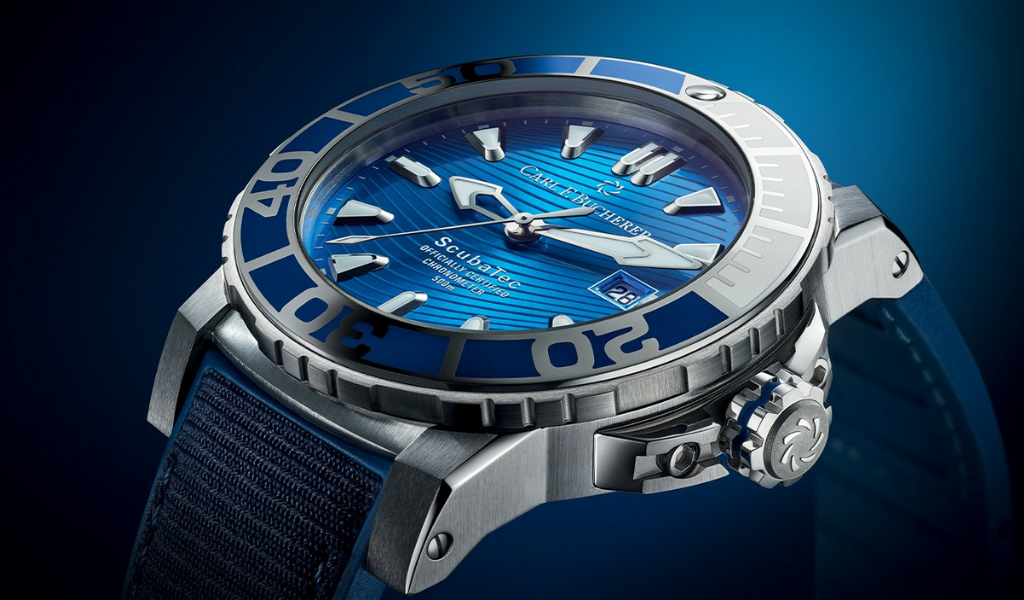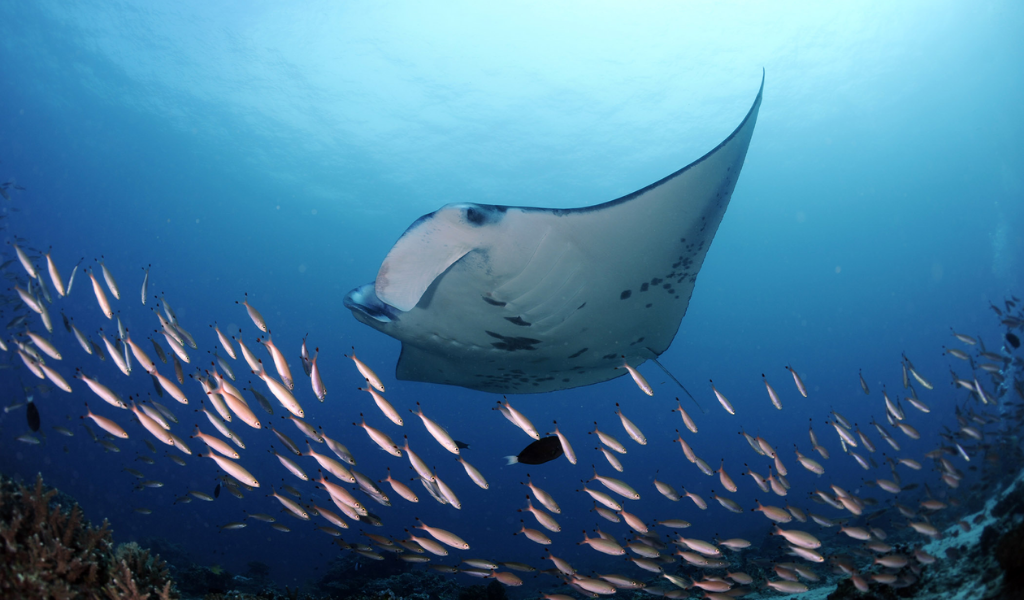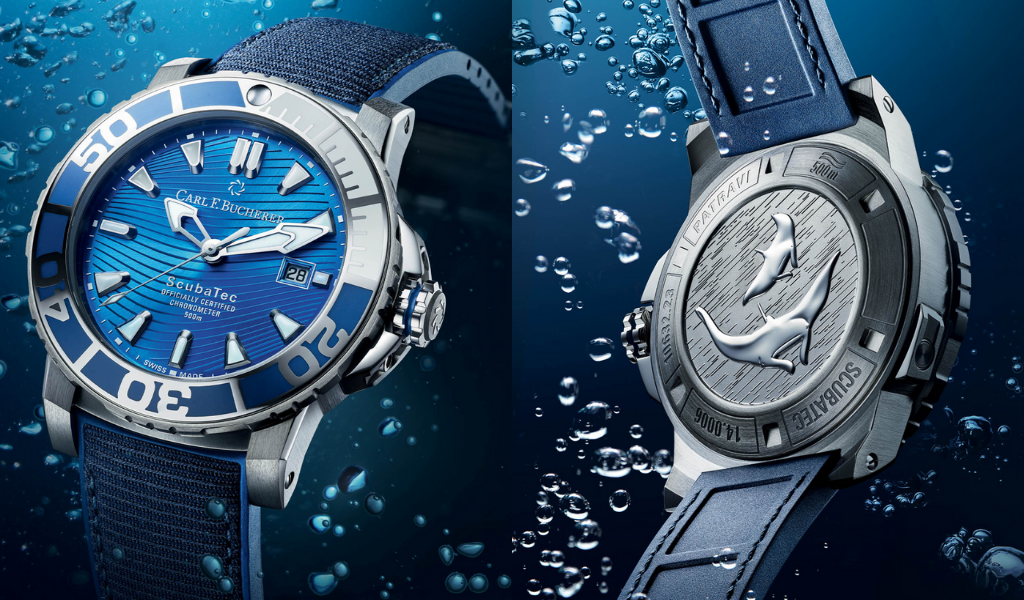

Patravi Scubatec Maldives Edition Is A Timepiece Which Belongs in the Pristine Waters of Maldives
Wednesday 21st of April 2021
Carl F. Bucherer is a Swiss watch company based in Lucerne, Switzerland, which manufactures luxury men's and women's mechanical watches. The company and its people have a strong passion for manta ray conservation – following which they closely work with friends who are far away with the same passion - Manta Trust and the Maldivian Manta Ray Project (MMRP) from Maldives.

Since 2017, the Swiss watch company has been a support system to Manta Trust by raising awareness and vital funds through the sale of special edition diving timepieces. This year Carl F. Bucherer is putting out the fourth watch in its Patravi Scubatec series; a special Maldives edition.
Patravi Scubatec Maldives Edition is an elegant beauty which comes in a 44.6 mm stainless steel case with an eye-catching unidirectional rotating bezel with blue and white ceramic inlays. The blue theme continues onto the dial with a bright blue lacquered wave decoration that catches the light like the sun on the ocean. It is paired with a natural rubber strap, also in blue, that has a textile insert that has been made from 100% recycled plastic pulled from the Mediterranean Ocean.

The diving functions instilled in the watch include of a great legibility that comes in the form of a bold 60-minute scale with luminescent markings to calculate elapsed time underwater, as well as Super-LumiNova on the indexes and hands. There is a non-slip bezel for easy manipulation, even with diving gloves on, and a finely adjustable diving folding clasp that extends for wear over a wetsuit. The watch lSO features a screw-down crown, a helium release valve, and an impressive water-resistance of 500 metres. The watch is powered by the Swiss watch company’s CFB 1950.1 COSC-certified chronometer, which makes it a professional piece of diving equipment.
Just as the previous models, a cut of the sales of this special timepiece will go to funding Manta Trust’s important work – this time being to help fund a new floating research station in the Maldives.
Research bases of Manta Trust at present are centralized – limiting the extent to which members of the team can travel in addition to the area they can survey. A floating research station will enable research teams to work together in one place and provide access to study areas that have so far been inaccessible from the centralized stations.
Photos: Carl F. Bucherer